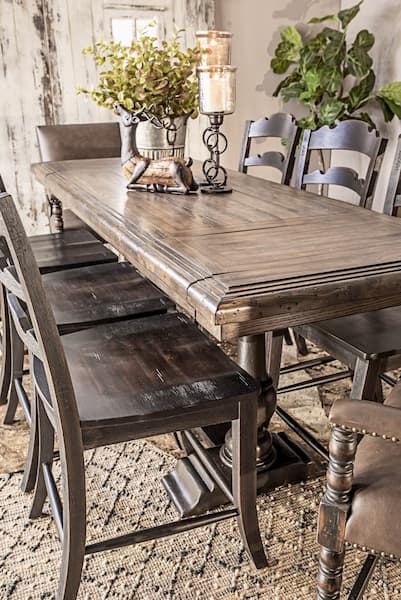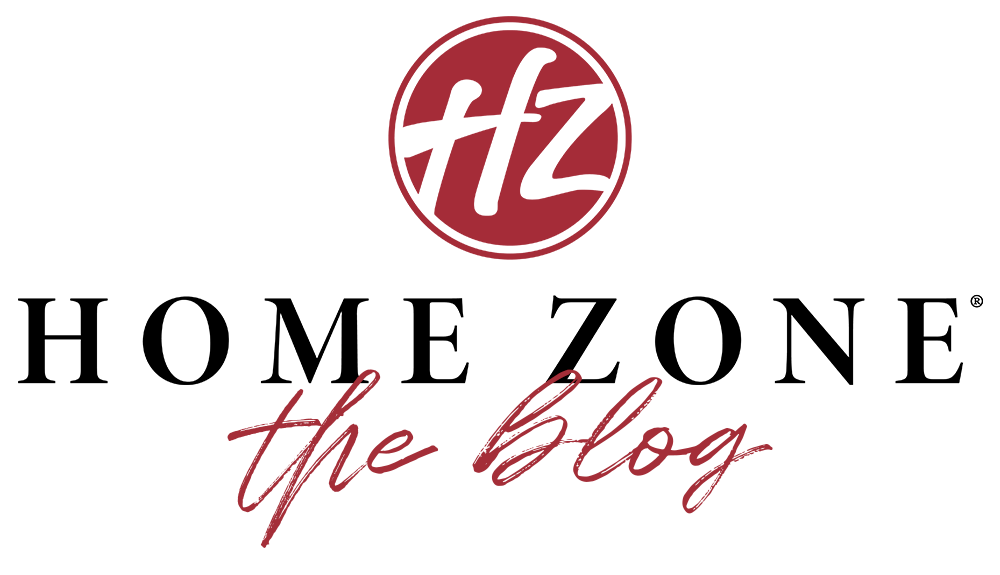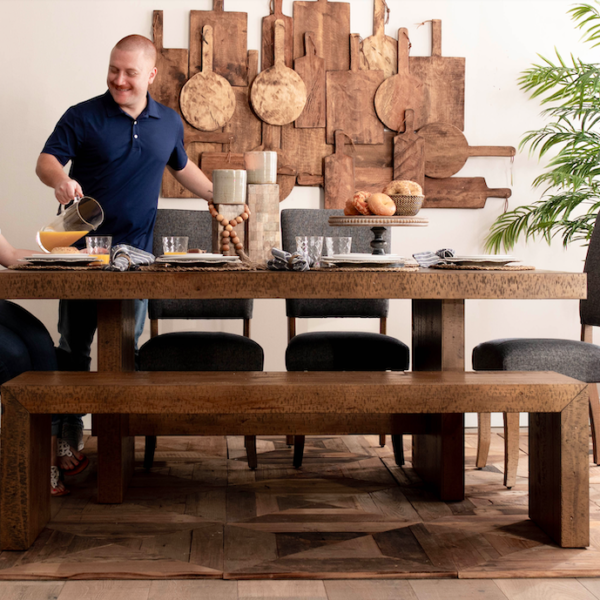
A dining room is a special area that allows gatherings of friends and family, usually over a hearty home-cooked meal. How to choose a dining room table depends on a variety of factors. Lifestyle plays an important role when choosing a style of table. The way you use your table greatly impacts the style that you should go for. If your table is an extension to your kitchen, chances are that it will probably be used for more than just a meal. Food preparation, homework or work will benefit from a more casual style table, with a more durable surface that won’t easily damage. The size of your table depends on the size of the room. Keep in mind that guests should have space to sit comfortably, and the chairs require space when pulling them out.
Know Your Dining Room Dimensions
While the look of your table is important, even more critical is how it fits into your area, while offering enough seating and space for your table guests.
- Allow around 35 inches of clearance on each side of the table. This space allows the chairs to be pulled out, or to walk behind your seated guests at the table. Take your existing furniture into account when measuring your area.
- A dining table usually has two types of areas: the shared area keeps the dishes and condiments and is typically in the middle of the table, and the place setting area. The width required for a place setting is generally dictated by the average shoulder width of a person of 24 inches, and the depth required is usually dictated by the average size of a plate and a glass. With this in mind, the minimum dimensions for a rectangular table to seat six people would be 78 in x 39 in. The ideal dimensions for this table would be 98 in x 55 in, allowing for easy movements and adequate space.
- For increased versatility, an expandable table offers additional seating when required, and keeps it compact when not in use.
Dining Table Shapes
We offer a diverse range of dining room tables to suit various requirements.
- Round dining room tables work best in small spaces. They fit into tight areas, and have no sharp corners to bump into. Round tables can usually seat more people because it has no corners. Pedestal tables can accommodate an increased number of guests as they offer more legroom.
- Rectangle tables work well in narrow spaces, and assist with additional room for traffic flow. Using a bench instead of chairs is a space-saving technique, as the bench can be stashed away under the table when it’s not in use.
- Square dining tables offer an intimate setting as each diner is an equal distance apart. If your room is square, a square table compliments the rooms shape around it.
- Oval dining tables create unique visual interest. While they are similar to rectangular tables, their rounded corners create the impression that they occupy less space. The curves help to counter angular lines on your existing interior elements in the room.
Dining Table Materials
A dining room table has diversified into more than just a surface where you eat. How to choose a dining room table depends on the activities your table may encounter.
- Natural hardwood tables offer longevity, and are available in a wide variety of stains to suit your existing décor.
- With landfills increasing each year, reclaimed wood is an environmentally friendly option for a durable dining room table.
- Glass is an ideal material to consider when space is lacking, and you don’t want your room to look overwhelmed with bulky furniture. Thanks to the transparent nature of glass, spaces appear larger. Combining glass and metallic colours bounces light around your room, making it appear brighter.
Dining Table Height
Traditionally, dining table height would be anywhere between 28 – 30 inches tall. These days, space restrictions have called for space-saving techniques regarding household furniture. Standard table height measurements are always taken from the floor, to underneath the counter. If your counter is thick, you may need to consider lower chairs to accommodate for this. Matching your chair height to your table is essential for ease of movement, and allowing enough space to move your elbows and cross your legs.
- Standard dining and kitchen table height is anywhere between 28 – 30 inches tall. An advantage to this height is that it is the most common, and is available in a wide range of styles. These dining tables accommodate standard height seating. This height is best to use when young children, elderly or disabled persons will frequent the space.
- Standard counter height averages between 34 – 39 inches tall. Counter height tables can create the illusion of your space being less crowded. This height is convenient to stand at, and can double up as cocktail tables when required.
- Standard bar height is usually between 40 – 43 inches tall. Bar height tables are ideal for small, skinny spaces, as in modern apartments where space is often limited. They offer a classy, sleek style and are available in many formats to suit unique preferences.
Find the Right Dining Table at Home Zone Furniture
Each room in your home provides a unique experience for you. A dining room provides an entertainment area, and your dining room table is a core aspect of your home. Our range of dining tables add an aesthetic advantage to your home, while offering functionality. If you are unsure how to choose a dining room table, and require assistance, contact us.
Find a Home Zone Furniture Store in Texas Near You
Mesquite, TX | Richardson, TX | Hudson Oaks, TX | Cedar Hill, TX | Lewisville, TX | Arlington, TX |North Richland Hills, TX | Denton, TX | Fort Worth, TX | Burleson, TX |


